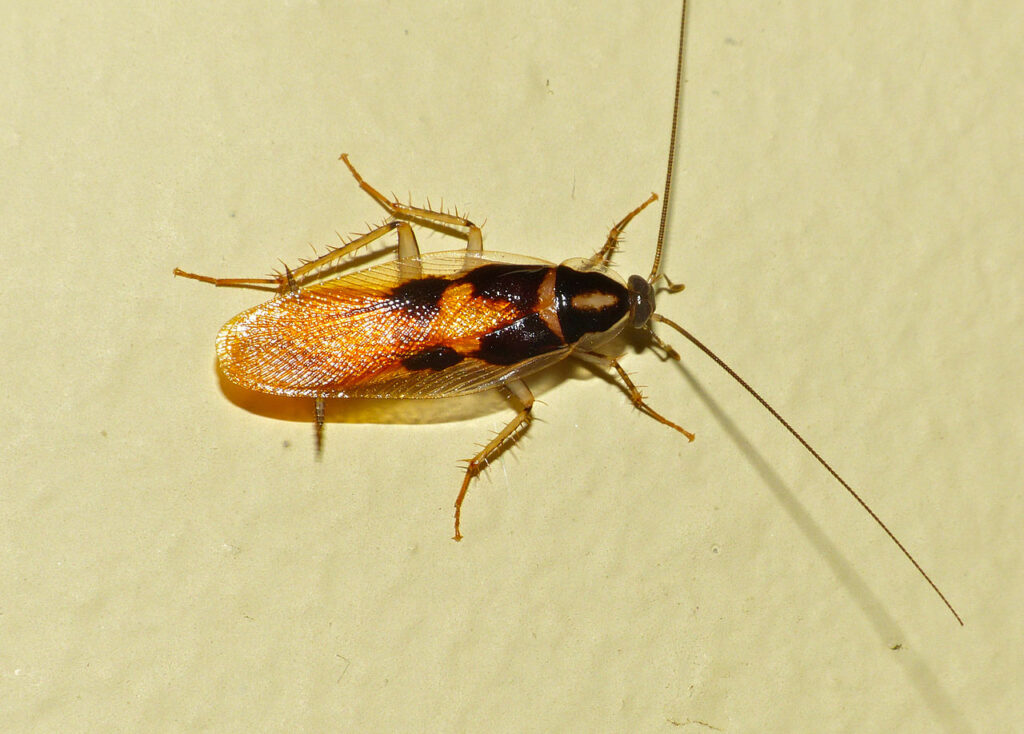
Appearance
The Brown Banded Cockroach (Supella longipalpa), measuring about 1/2 inch in length, is easily recognizable due to its light brown coloring and two distinctive bands running horizontally across its body. Males feature longer, narrow wings that cover their abdomens, allowing them to fly when disturbed. In contrast, females have broader bodies with shorter wings.
Origin and Habitat of the Brown Banded Cockroach
This species, often referred to as the “spotted” or “tropical” roach, originated in Africa and reached the United States through Miami and Cuba. It thrives in warm climates and inhabits various environments, including homes, offices, and commercial establishments. Unlike many other cockroach species, the Brown Banded Cockroach requires less water, which enables it to inhabit drier areas within structures.
Life Cycle and Reproduction
The Brown Banded Cockroach has a fascinating life cycle that ranges from 90 to 270 days for full development. After forming the egg capsule, female cockroaches carry it for 1-2 days before attaching it to concealed areas, such as behind furniture or in cabinets. Remarkably, a single female can produce up to 14 egg capsules throughout her lifetime, with each capsule containing 10-20 eggs that typically hatch within 50-75 days.
Behavior and Diet of the Brown Banded Cockroach
These cockroaches are nocturnal, often hiding during the day and emerging at night to forage for food. Their omnivorous diet includes starchy foods, sweets, and organic materials, making them a common nuisance in kitchens and food storage areas. Additionally, they can contaminate food and surfaces with pathogens, posing health risks.
Cockroaches as Pests
The presence of Brown Banded Cockroaches is undesirable. Often found in unsanitary environments, they contribute to food contamination. They can carry disease-causing organisms on their bodies and feet; therefore, effective pest management is essential.
Control Strategies
To manage Brown Banded Cockroaches effectively, we recommend Integrated Pest Management (IPM) practices. This holistic approach combines multiple strategies, including:
- Cultural Control: Implement sanitation practices and eliminate food and water sources.
- Physical Control: Seal cracks and crevices to limit entry points.
- Mechanical Control: Utilize traps to monitor and manage populations.
In conclusion, understanding the characteristics and behaviors of the Brown Banded Cockroach is vital for effective control. Implementing an IPM strategy can help maintain a pest-free environment, ensuring health and safety in residential and commercial spaces. If you suspect an infestation, contact a professional pest control service for assistance.
For more info, take a look at the University of Floridas webpage on Brown Banded Cockroaches.
Take Action Against Brown Banded Cockroaches!
Don’t let cockroaches invade your space! Contact us today for a professional pest control solution that targets and eliminates these pests effectively. Your home deserves to be pest-free!
